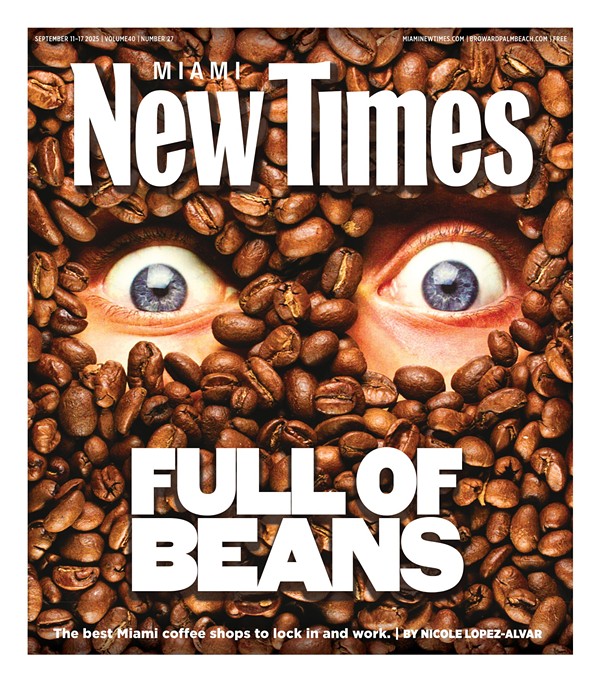You may go by Henry Miller's 1939 "Letter to Surrealists Everywhere," where he makes a case for a nonfunctional view of art. Artists owe nothing to the world, they are only bound to their own experience of life. It's an appealing view for creating art but not for selling it. We resist equating art's content with its dollar value because otherwise it would lose its aura of unwavering originality. But make no mistake -- since that piece left the artist's studio, it may have twice added to its original value.
Art spheres are clearly divided: We have artists, dealers, collectors, critics, galleries, museums, art schools, nonprofits, the media, and the public. Art can sell at astronomical prices (remember Van Gogh's Portrait of Dr. Gachet that went for $82.5 million?) There are art bubbles and art depressions (like the one we live in now, after those extravagant days in the early 1990s).
The artist finishes her piece and the gallerist sells it, collecting a 30 to 55 percent profit. Now comes the skilled collector. He will try to have the artist exhibited in other collectives in museums through his connections with curators and the museum board, of which he's likely a member. The museum in turn will receive a higher donation and important connections through the social network.
Lending his piece for collective and solo exhibits and having the piece reviewed in newspapers and magazines, the collector adds prestige to his initial investment. Within a decade, the artwork will appreciate, according to a 1998 study from Paris's Sorbonne university's art department, at least 20 to 30 times its original value. All the actors -- museum directors, curators, critics, gallerists, and collectors -- play a part because they belong in the same play. So that's the nature of the market in a capitalist society, without doubt. Let's move on to a different, but related matter. Business dealings bring up ethical issues, and I'm not referring to illegal transactions, but to more pervasive habits that remain undesirable. Not everything that's legal is ethical, though we may wish it to be the case.
Let's consider some of these ambiguous questions: Should a curator accept gifts from collectors for artworks she recommends to a museum or a gallery? Is it desirable for a curator to appear in a show she curates? Should a critic help an artist whose work she collects? Is it ethical for a foundation director, a curator, or a critic to accept gifts from artists in exchange for exhibition opportunities? Is it proper for a gallerist to open up a cut-rate auction benefiting a foundation -- only to have his clients buy the art before the public? Can a critic accept artworks or gifts? These questions are related by what's known as conflict of interest. Art dealings bring up such conflicts when one's personal gain calls into question one's objectivity or honesty. Practices common everywhere, and we're no exception.
"Art is beautiful, but exquisitely more beautiful are the dollars, that green sweet-scented essence in every man's dreams." This is Salvador Dalí's hyperbolic, but true definition of capitalism. He knew, and he was right.
For a minute, let's not limit our vision of beauty to artworks. Instead I want to concentrate on the urban environment that encompasses the former. Miami wins an international prize in urban design for its legacy to the world: our beaches. The brainwashing begins with the eager tourist who goes through MIA listening to this greeting: "Welcome to sunny Miami and its beautiful beaches." But sadly that's all we have to show, our city being so messy, ghettoized, congested, and now increasingly gentrified with a market bubble of lofts and condominiums for the rich.
Recently I was part of an audience at a conference about urbanism in Cataluña, Spain, where a group of young architects and designers came up with a series of ten points to make Barcelona a more beautiful urban environment. Since that city is light-years ahead of us in the urban beauty pageant, I thought their conclusions applied more to Miami: "Ten Points for a Progressive Miami Urbanism."
These would be: 1) reducing travel and energy consumption (encouraging public transport, walking, and bicycling); 2) limiting environmental damage to the city (often from development and tourist industries); 3) building for variety and mixed use; 4) building for human needs and social mix over gentrification and isolation; 5) ameliorating the stark urban landscape with more greenery and tree covering; 6) developing multiple and compact city centers; 7) building with a regional identity in mind; 8) stressing a sense of place and belonging; 9) expanding green spaces and parks; 10) encouraging much more public participation in our own development. I ask our politicians, developers, urban planners, landscape architects, and readers, do you really feel our city is working toward any of these points?
On to exhibits. Check out "Made in Miami" at the Fredric Snitzer Gallery, showcasing alumni from the New World School of the Arts. A nice event, refreshing and well presented from perhaps the best school for young art in Miami.
The list of artists is too long to mention, but for instance I couldn't leave the proximity of Jason Hedges's colorful hanging tequila bar (next to the door), with a variety of five handsome labels to choose from. Contemporary art has the advantage of being interactive and as far as I could tell, lots of people joined in the sampling.
Over to the artists' discussion at Rocket Projects, which went well, each artist having an opportunity to explain his work within the collective show called "Customized." George Sanchez talked about the importance of architectural, site-specific work, while David Rohn explained his conceptual pieces through his use of materials. FeCuOp's poised ramblings illustrated the difficulty in breaking away from solipsism in art. Martin Oppel said enough to leave us with an appetite to see the work again, and Daniel Arsham analyzed the car's function in today's society vis-à-vis familiar sites such as his "unpractical" parking garage, a model of which was his addition to the show.
A brief debate about what is "original" in art became the highlight of the evening, and I felt people settled for a quick and unclear answer. This controversy about what's original is a good thing resulting from Rocket Projects' first show, and I'd like to help elucidate the issue by borrowing from a different discipline: So as not to risk plagiarism, music sampling is required to be fewer than four bars -- the minimum for a noticeable melody to appear. More than that is piracy. However, composers can always do a longer "mix" by citing the sample's author. There's nothing wrong in paying some royalties. Now, apply the same in art.












